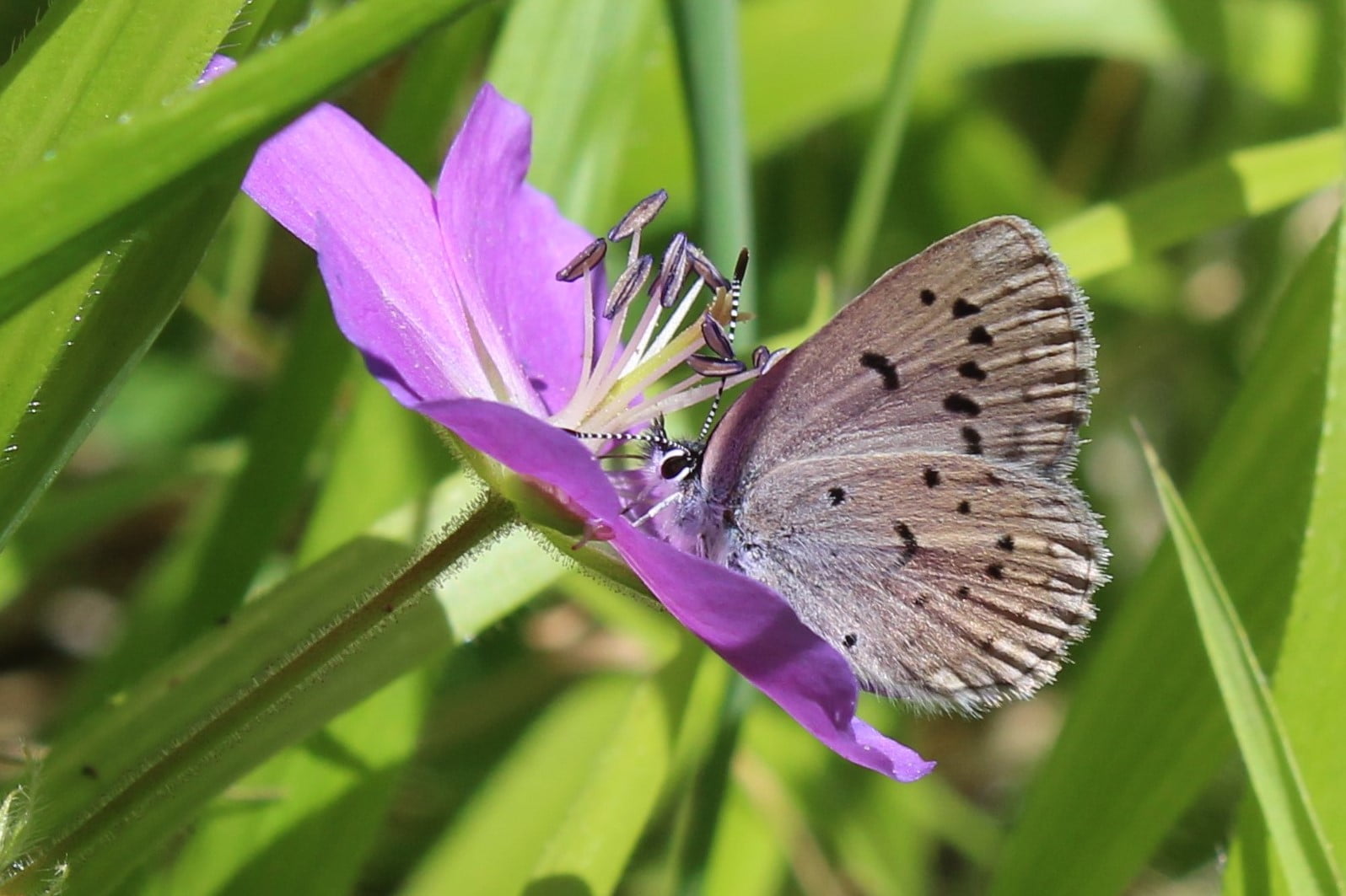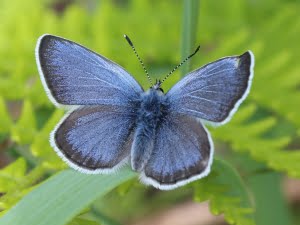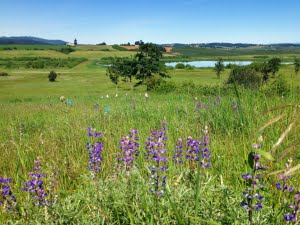
2019: A Better Year for Fender’s Blue Butterfly
January 2020
Since 2016, IAE has coordinated annual surveys for the endangered Fender’s blue butterfly (Icaricia icarioides fenderi) across its range in Oregon’s Willamette Valley. The total number of Fender’s blue butterflies fluctuates on an annual basis, driven by variation in individual populations, which sometimes double or halve between years. We are thrilled and relieved to report that after two years of relatively low butterfly numbers, 2019 was a great year for Fender’s blue.
Fender’s blue butterfly was listed as an endangered species in 2000 primarily because of its extreme rarity due to upland and wet prairie habitat loss and fragmentation. Sites in conservation with the butterfly have been monitored on a mostly annual basis for the last 10 years, and some, like those at Baskett Slough National Wildlife Refuge near Rickreall, Oregon, have been monitored regularly for almost 25 years.

The total number of butterflies across the Willamette Valley and within individual sites can fluctuate substantially between years, which is likely driven by factors including weather and habitat conditions, along with survey method and technique. Data suggest that roughly 3,000 Fender’s blue butterflies existed in 1993, which then fluctuated between approximately 6,300 and 1,750 individuals from 2000 to 2011. Since 2012, newly discovered populations, populations expanded through habitat restoration, and changes in sampling method may explain the substantial growth in numbers of Fender’s blue butterflies; as the overall estimated population in 2016 was a peak of nearly 29,000 butterflies. Poor weather conditions in the winter and early spring of 2016-2017 contributed to a significant reduction in the estimated population size; declining by 50% to roughly 13,100 butterflies in 2017, and only recovering slightly to an estimated 13,700 butterflies in 2018. Increases across many sites with the butterfly contributed to a range-wide population estimate of nearly 24, 500 butterflies in 2019.
This positive trend is very welcome, and reinforces the benefits of habitat restoration to reduce invasive weeds and increase lupine host plants and native nectar plants. Intensive work to restore prairies with Fenders’ blue by land mangers including the Army Corps of Engineers (ACOE), US Fish and Wildlife Service (USFWS) National Wildlife Refuges, the USFWS Oregon Fish and Wildlife Office, Bureau of Land Management and Bureau of Reclamation, Benton County, The Nature Conservancy, Greenbelt Land Trust, and Yamhill Soil and Water Conservation District continues to support Fender’s blue butterfly across its range. IAE is proud to partner with these land managers.
IAE is grateful for funding provided by USFWS, and assistance from the Oregon Parks and Recreation Department. A huge thanks to all surveyors, including Jock Beall, Christine Calhoun, Jessica Celis, Cassandra Doll, Riley Duncan, Andrew Esterson, Greg Fitzpatrick, Paul Hammond, Amie Loop Frison, Gary Pearson, Dana Ross, Duncan Thomas and Rhiannon Cochrane. We are grateful to all public and private landowners who support surveys for Fender’s blue butterfly on their land. Our continued appreciation also goes to Tyler Hicks for his assistance with distance sampling analysis.
Restoration
Research
Education
Get Involved
Contact
Main Office:
4950 SW Hout Street
Corvallis, OR 97333-9598
541-753-3099
[email protected]
Southwest Office:
1202 Parkway Dr. Suite B
Santa Fe, NM 87507
(505) 490-4910
[email protected]
© 2024 Institute for Applied Ecology | Privacy Policy

